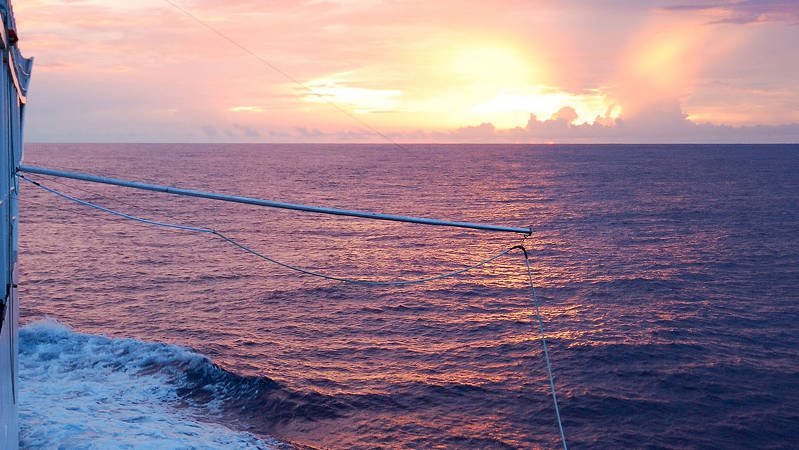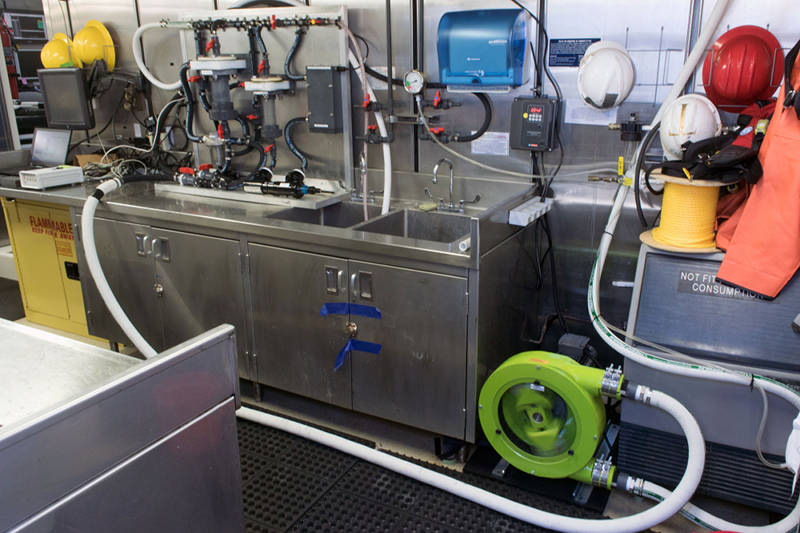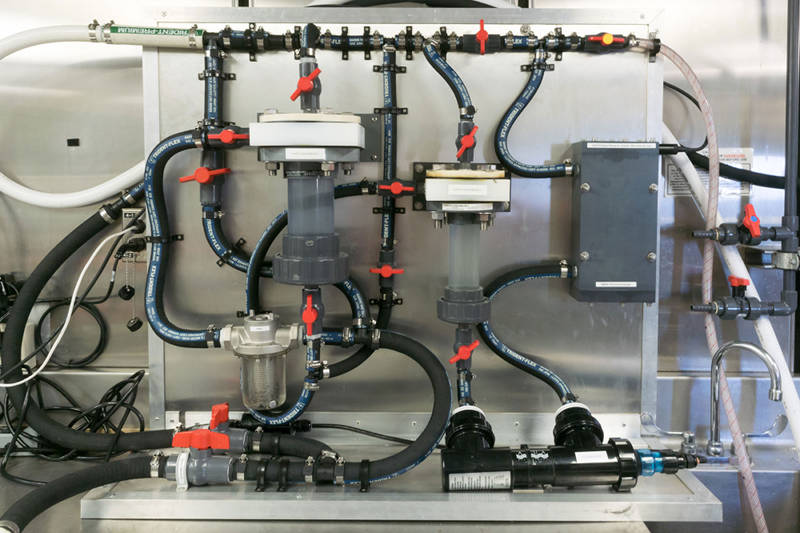
By Julian Schanze - Earth & Space Research
May 22, 2015

Shortly after getting underway from Panama, the sea snake was deployed and began to collect data. The Salinity Sea Snake hangs off of the starboard side of NOAA Ship Okeanos Explorer from a 30-foot boom which allows for water collection outside of the wake of the ship. Image courtesy of NOAA Office of Ocean Exploration and Research. Download larger version (jpg, 449 KB).
To calibrate and validate these surface salinity measurements from space, the NASA Aquarius science team mostly relies on Argo floats , a fleet of approximately 3,800 floats taking measurements of temperature and salinity in the upper 2,000 meters of the ocean every 10 days.

Interior set up of the Salinity Sea Snake in the wet lab of NOAA Ship Okeanos Explorer. Image courtesy of NOAA Office of Ocean Exploration and Research, Tropical Exploration 2015. Download larger version (jpg, 417 KB).
To ensure the delicate sensors aren’t compromised by debris or surface films, these sensors shut off at a depth of about 3-5 meters (10-15 feet) from the surface before they send their data back to scientists around the world. However, measurements from satellites are taken in the top 1-2 centimeters (about 0.5-1 inch). Oftentimes, this difference isn’t a problem. The ocean is regularly mixed by strong winds at the surface, churning the uppermost tens of meters until the temperature and salinity barely change with depth. We call this a “well-mixed upper ocean.”
But there are also cases where the ocean isn’t well mixed and we see significant differences between typical Argo depths (3-5 meters/10-15 feet) and the surface. This is especially true when there is rainfall without strong surface winds. When rain falls on the ocean in calm conditions, it forms ‘puddles,’ or ‘freshwater lenses,’ which float on the surface because freshwater is less dense than seawater. In these conditions, salinity satellites may see a very different ‘surface salinity’ than Argo!

Once water is pulled into the wet lab, it is then carefully filtered, de-bubbled, sterilized, and analyzed by a thermosalinograph. Image courtesy of NOAA Office of Ocean Exploration and Research, Tropical Exploration 2015. Download larger version (jpg, 401 KB).
This is where the Salinity Sea Snake (or affectionately just called “the snake” or “the sea snake”) comes into play. During this expedition, NOAA Ship Okeanos Explorer is hosting me and the instrument I designed. I (Julian Schanze) am a Research Scientist at Earth & Space Research in Seattle, Washington, a nonprofit research institute.
The sea snake is a long hose that is dragged from a 30-foot long boom outside the ship’s wake at the very surface of the ocean. A powerful pump sucks up surface water (as well as some air when the snake takes a leap) which is then carefully filtered, de-bubbled, sterilized, and analyzed by a thermosalinograph on the wet lab on the ship.
So far on this cruise, the sea snake has measured two puddles in a four-day period and I am hoping for more to come!